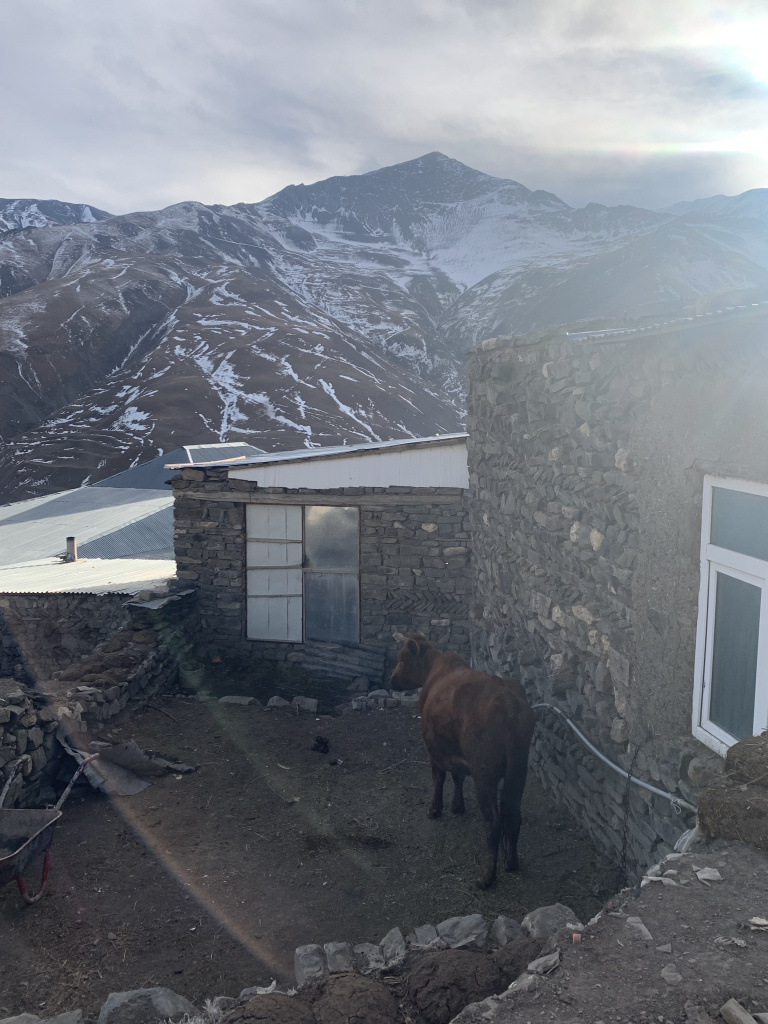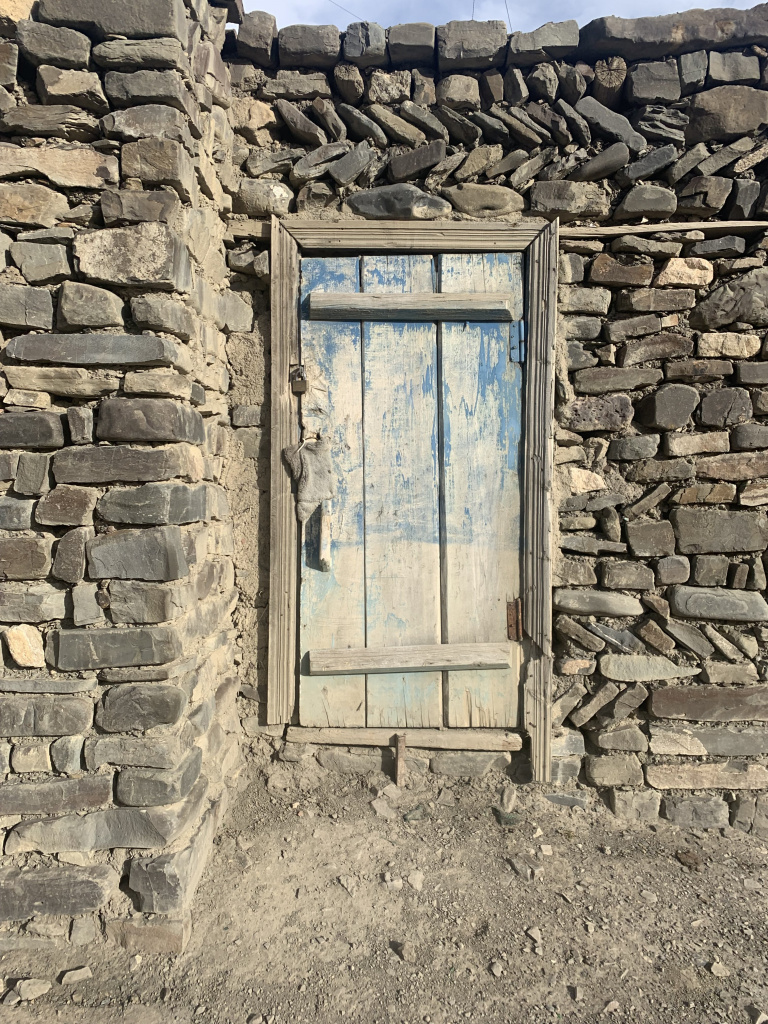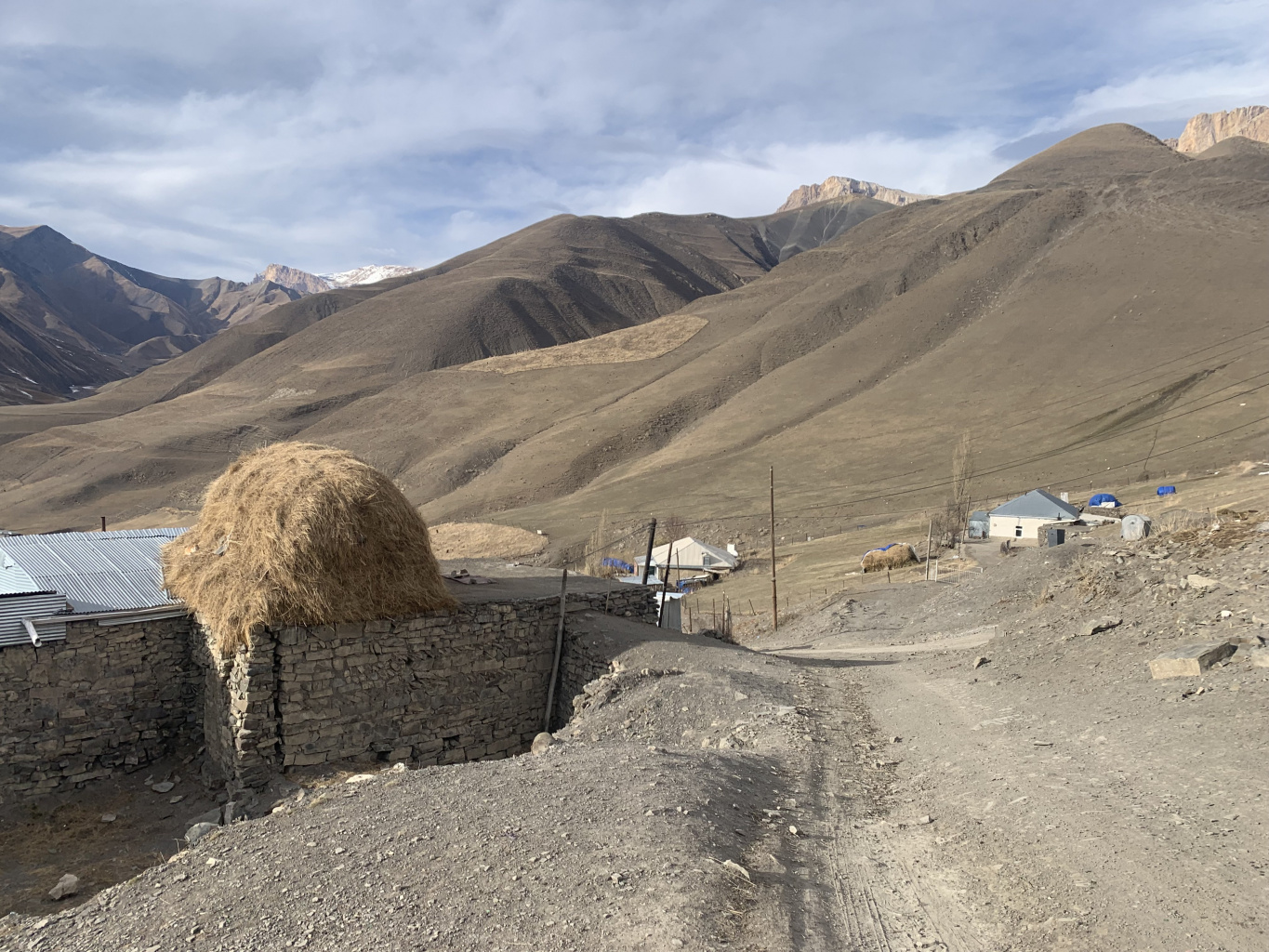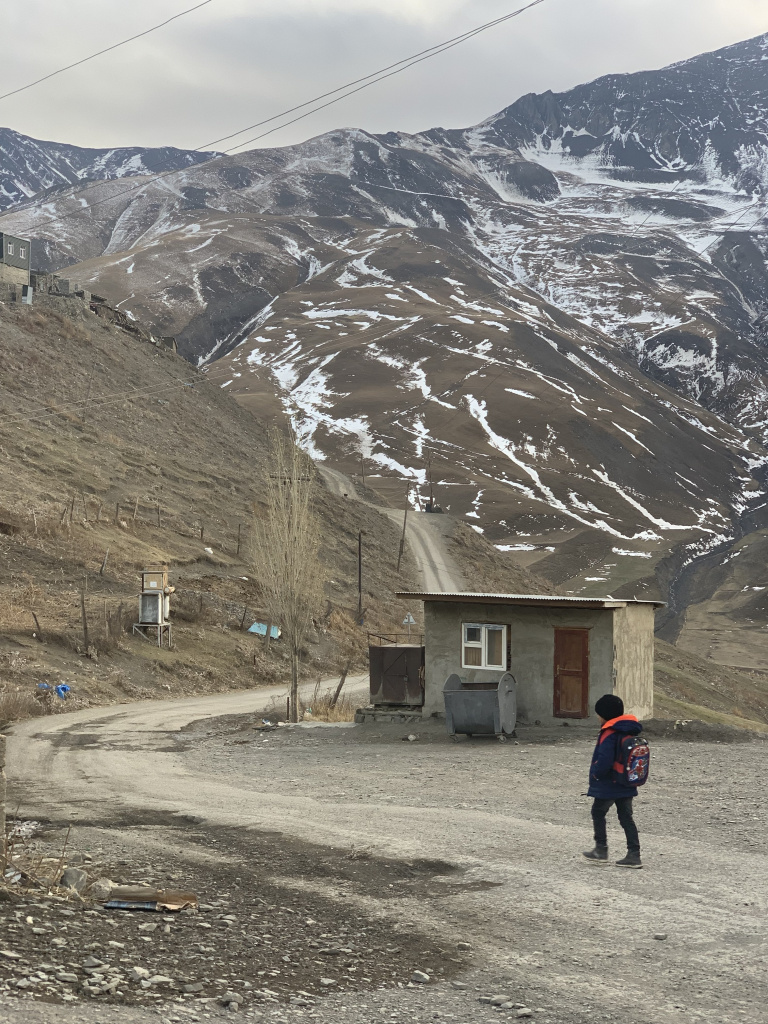A discerning traveller can get a lot of experiences in Azerbaijan. The country can boast of several wineries, modern skyscrapers, oil rigs, delicious and varied food, original villages and settlements. One of these remote villages is especially amazing, because it is hidden from prying eyes high in the mountains and is located right on the edge of the cliff. It is not easy to get to it, but it is really worth seeing it and feeling the local flavour.

The Khinalyg village is located in the Guba District of Azerbaijan. It takes about three to four hours to get to the village from Baku, it is a thrilling journey along a mountain winding road.
The matter is that the village is located at an altitude of over 2,000 metres. Although a fairly good paved road goes to it from the Guba, a district centre, not every car can overcome such a path, especially in bad weather. From time to time, some sections of the road are washed away by rain in autumn and winter. In addition, there is thick fog in the mountains after sunset, that’s why visibility tends to zero. By the way, you can literally touch the clouds in these places as they are very low. Sometimes, you can see small clouds looking like small lambs ‘floating’ back and forth between the houses. I hope you won’t get them mixed up with the living ones.

In any case, it is better for those who is going to visit Khinalyg to find an experienced local driver in advance or contact a travel agency, as I did. As part of an organized tour, the tour agencies offer travellers to visit several more places along the way. Mount Besh Barmag and the Gyachrash forest are among them as well as the village of Krasnaya Sloboda where the Mountain Jews live. My tour lasted one-day and gave me an incredible experience. On the way to the village, I was lucky to have a chance to admire the views, watch the eagles soaring in the sky, and even taste qutabs (thin pies) with fragrant sumach (spice) and matsoni (sour-milk drink) in the Gyachrash forest. By evening, I returned back to Baku. However, some independent travellers stay overnight with the locals who are famous for their hospitality.

In Khinalyg, my companions and I were met by such a friendly person. He invited us to his house where we had a cup of tea made with mountain herbs and he told us about the village and villagers. The table was plentiful but plain and he offered all the meals with all of his heart, it was a homemade shortcrust pastry pie with a layer of honey, as well as sweets and sugar in a large crystal vase. There were photographs on the wall of the owner’s house taken while hunting, a pair of kindjals (daggers) and twisted horns of a sheep or goat, probably, of a rocky-mountain goat.
Our host told an old legend about how the settlement got its name. The village is located in a stunning place on a cliff surrounded by mountains. A river flows in the valley. One of the mountains is called Khinalyg. There is a version that its name comes from the word ‘henna’. At sunset, the mount becomes fiery red. It seems that the flame covers the rock and burns it to ashes by nightfall. In any way, such an explanation seemed to me both romantic and convincing.

The village is included in the preliminary World Heritage List. According to local villagers, the UNESCO representatives come to the village every year to help rebuild the houses. And this is not surprising. Many buildings look so time-worn that it seems impossible to determine their real age. All of them are cascaded, and the roof of one house can serve as a foundation or a courtyard for a neighbour’s house. Almost all buildings are made of stone, and more modern houses are protected with aluminum siding. There are also ruins where hardly anyone lives now. By the way, according to some sources, people settled in these places more than 2,000 years ago.

The Khinalyg people do not enjoy the benefits of civilization. The village has a power supply and telephone connection, and in general, even the mobile Internet works rather reliably. However, due to changeable weather in the mountains, intermittent power outages can still occur, and a little stronger wind is enough to leave the village without power for a while.
The settlement is not gasified and the local villagers use dried pressed dung to heat their houses. Big piles of pressed dung are near every house. They are even used to make a kind of pens for livestock. And on sunny days, they put the pressed dung on the roofs of houses for drying.

There are a lot of carpets in the houses of the local villagers. They are not used to make the house look better, but to keep it warm. Some people bring gas cylinders from the city to cook food.
One of the locals said that in recent years, the meal habits of the Khinalyg people have changed. Their food is not much different from that of the Azerbaijanis living in cities. There is even a shop in the village where the people can buy everything they need. Not so long ago, the Khinalyg people ate mainly the food they could get while hunting and breeding the cattle or growing the vegetables in their gardens. In the mountains, a lot of efforts are required even to grow potatoes, so there were not so many vegetables and fruits in the diet of the villagers.

The host complained that there are problems now with hunting as it is not easy to get a hunting permit, and there are many restrictions because the village is surrounded by the Shahdag National Park.
Today, cattle breeding remains the main occupation of the local villagers and they raise sheep that are taken to the city for sale during the Eid al-Adha (Kurban Bayram, feast of sacrifice). Cows, geese, chickens, and turkeys are also raised in the village. It is noteworthy that if Baku can be called a city of cats, dogs are much more common in Khinalyg. They protect people and livestock from wild animals, for example, wolves coming to the village.
In addition to cattle breeding, the women in the village are engaged in needlework. Local women knit slippers, socks and mittens that are offered to tourists for a small money (10-12 manats).

There is a boarding school in the village, as well as two museums and an ancient cemetery with old graves located right on the mountainside. Most of them are just stone slabs without any inscriptions.
There is also an interesting temple in Khinalyg. Many centuries ago, the locals were Zoroastrians and worshiped the fire. The temple of fire worshipers is still in the village, although now, it houses a mosque. Its decoration is rather modest, including two small windows, carpets, stone walls, and wooden beams. There is a large stone slab at the entrance where the sacrifice takes place during Eid al-Adha. Outside, the mosque looks no different from other houses.

The Khinalyg people have their own language and preserved their ancient traditions. However, the person I was talking to spoke excellent Russian and Azerbaijani, and the local kids even know a few words in English.

Unfortunately, increasingly more young people leave the unique village for the regional centre now. According to my interlocutor, less than a thousand villagers remained in Khinalyg. Most of them are elderly ones, so the fate of the village is unclear.
I would like to believe that the popularity of this unique place among tourists will help preserve it. Time seems to go slow in this place. It is somehow more ‘leisurely’ and it enveils everything like a fog descending in the evening on the surrounding mountain slopes and valleys. Despite the ‘deafening’ silence, the village is full of life in its own way. Chickens and geese busily scurry between the houses. Children have fun giving each other a ride on an iron cart. A group of older men are playing dominoes on the doorstep of a house. And the old woman stands looking thoughtfully into the majestic mountains painted with fiery red ‘henna’.


